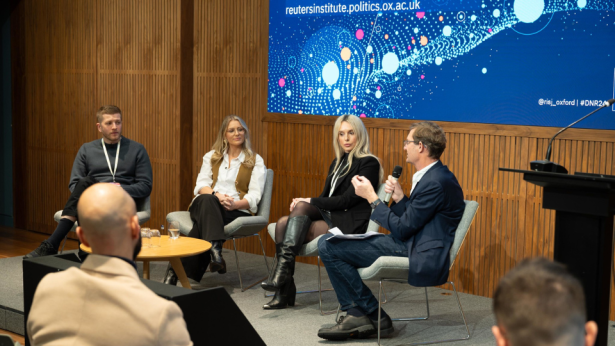Experts in interactive storytelling and visualisation shared tips with delegates at news:rewired today. And while they said dealing with graphics is a “culture shift” for some publishers, they thought most were ready to expand their news presentation styles.
Ollie Williams, Olympics reporter for BBC Sport, said it was important for anyone considering producing interactive graphics not to underestimate the time involved, and be sure the story can last.
My tip would be not to bite off more than you can chew and be aware of what your long-term commitment to the interactive is.
He added that the use of interactives is often best executed within niche markets, which “allows you to find new and interesting information”.
If you can think of anew way to present it, it is much easier to sell to readers. If you create something your reader can click around, play with and share with people, then I think no matter which niche you are in you can make a lot more mileage from a story. Interactives can be the most compelling content, which you can explore in a way you often don’t with an article.
Breaking down the different avenues publishers could explore, Rob Minto, interactive editor at the Financial Times, defined two types of interactive graphics, those that tell the story and involve the reader and those that allow the reader to manipulate the data to make their own story.
He used several examples to illustrate how the FT uses visualisations and interactives. This included an interactive ‘spiders web’ illustrating the different alliances between car makers, and a moveable timeline to show how the FTSE 100 has changed: both telling, and allowing the reader to engage with, the story.
Williams then compared them with an economic deficit cutting interactive, which enabled the user to make selections and then find out how their ‘decisions’ would have made an impact on the the budget. As his examples demonstrated, Williams’ biggest advice to delegates was to turn the visual into the story itself. Basically – be creative and different.
This is about news and in the crowded news environment it’s hard to stand out. Make the story about your graphic.
The presentations were concluded by Francis Irving, developer for ScraperWiki, who outlined how they can help journalists transform confusing data into a newsworthy story. He showed two examples of datasets the company can ‘scrape’ data from, producing more accessible tables or even visualisations such as maps, saving journalists time.
The only challenge left for the journalist, he added, was writing the final story clearly enough when dealing which such technical material. Now well aware of what help is available in the field of data scraping, Ollie Williams added that he wished he had known of ScraperWiki when he was working on creating interactive graphics to cover the Beijing Olympics.


